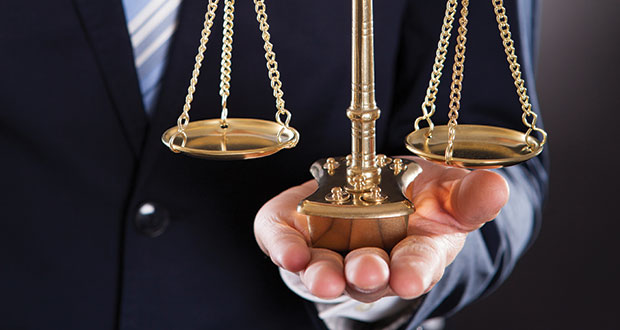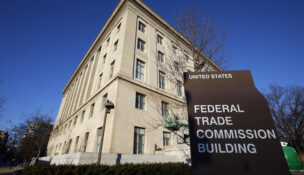Lawyers, start your questions
By: DOLAN MEDIA NEWSWIRES//December 4, 2014//

Admonitions during depositions offer strategic opportunities for both sides
By Daniel Small
Dolan Media Newswires
Depositions are such a common part of the civil litigation landscape that much of how they are conducted has become routine.
That includes the opening admonishments to the witness. But every witness and every situation is different.
Everything attorneys do in the witness environment should be for a reason, not just because they have done it or heard it before. Both sides, the questioning lawyer and the witness’ counsel, should think carefully about whether and when to do admonishments and how to prepare for and respond to them.
Like so many aspects of litigation, depositions are, in part, a battle for control. The questioner wants to be in complete command, and the circumstances certainly help. After all, it’s the questioner’s subpoena.
The questions are carefully thought out, and the documents are assembled and organized. The witness simply must sit there and take it.
On the other hand, one key goal of good witness preparation is to help the witness understand that the questioner’s control is nonsense. Witnesses have a right and a responsibility to control their testimony.
That battle is reflected in the admonitions. For the questioner, admonitions serve to protect the record in various ways. However, admonitions also are a means of asserting control by laying down the rules.
Yet by taking time to lay down the rules, is the questioner also giving the witness time to get comfortable in the chair? Whether, when and how those admonitions are given should be a matter of strategy.
In general, standard admonitions can be divided into five categories: protecting the oath, protecting the transcript, protecting the rules, protecting the testimony and protecting from excuses.
The first two admonitions can serve as examples of how questioners and witness’ attorneys can apply strategy to the process.
Protecting the oath
From the questioner’s perspective, the first set of admonitions is to protect and enhance the witness’ oath to tell the truth. The admonition may include questions such as:
“Do you understand that you have taken an oath to tell the truth?”
“Will you agree to take that oath seriously, just as if you were testifying in court?”
“Is there anything you do not understand about the oath or your obligation to tell the truth?”
Note the form of those questions.
The process should not be just a lawyer’s boring recitation. Engage the witness in the process.
The questioner should extract clear promises from the witness and should ask the questions until getting the right answer.
The other part of protecting the oath is to ensure competency:
“Is there anything preventing you from testifying truthfully and accurately today?”
“Are you taking any medication or anything else that might interfere with your ability to testify truthfully and accurately?”
While there is some logic to asking those questions at the outset, there is no such requirement. The questioner is in charge of the deposition.
Rather than letting witnesses get comfortable with generic questions they are prepared for, why not jump right in? Consider holding those questions to use as a control device.
Wait on the oath questions until witnesses waffle or contradict. Wait on the competency questions until they struggle with easy questions.
From the witness’ perspective, the key is preparation. With preparation, the questions are relaxing, routine. Without it, they can be a surprise and even feel like a frontal assault on credibility.
Protecting the transcript
The questioner should embrace the court reporter as part of the team with phrases such as “we have retained” and protect the record with admonitions such as:
“Our court reporter cannot keep a clear record if people are talking over each other, so will you agree to wait until I’m finished with each question before you answer, and I’ll try to do the same?”
“Our court reporter needs clear answers to make a clear transcript, so can you be sure to say ‘yes’ or ‘no,’ not nod your head or say ‘uh-huh?’”
“In order to create a clean transcript that can be used later, our court reporter needs you to describe things clearly. So, when you are talking about people, can you use their names rather than ‘we’ or ‘they,’ and when we are using a diagram or a photo, can you describe where you are pointing clearly rather than ‘this’ or ‘there?’”
Questioners should wait for the right moment and use those questions to reinforce the message that the questioner is in control.
But those are effective control devices only if the witness has not heard them before. The witness’ attorney should not let that happen.
Witnesses and their attorneys should review and discuss each tactic so they are prepared for the strategies the questioner might apply.
Daniel Small is a partner in the Boston and Miami offices of Holland & Knight.
Legal News
- Chicago man sentenced to prison after being caught with ‘Trump Gun’
- FTC bans non-competes
- Gov. Evers seeks applicants for Dane County Circuit Court
- Milwaukee man charged in dismemberment death pleads not guilty
- Democratic-led states lead ban on the book ban
- UW Madison Professor: America’s child care crisis is holding back moms without college degrees
- History made in Trump New York trial opening statements
- Prosecutor won’t bring charges against Wisconsin lawmaker over fundraising scheme
- Republican Wisconsin Senate candidate says he doesn’t oppose elderly people voting
- Vice President Harris to reveal final rules mandating minimum standards for nursing home staffing
- Election workers fear threats to their safety as November nears
- Former law enforcement praise state’s response brief in Steven Avery case
WLJ People
- Power 30 Personal Injury Attorneys – Russell Nicolet
- Power 30 Personal Injury Attorneys – Benjamin Nicolet
- Power 30 Personal Injury Attorneys – Dustin T. Woehl
- Power 30 Personal Injury Attorneys – Katherine Metzger
- Power 30 Personal Injury Attorneys – Joseph Ryan
- Power 30 Personal Injury Attorneys – James M. Ryan
- Power 30 Personal Injury Attorneys – Dana Wachs
- Power 30 Personal Injury Attorneys – Mark L. Thomsen
- Power 30 Personal Injury Attorneys – Matthew Lein
- Power 30 Personal Injury Attorneys – Jeffrey A. Pitman
- Power 30 Personal Injury Attorneys – William Pemberton
- Power 30 Personal Injury Attorneys – Howard S. Sicula











